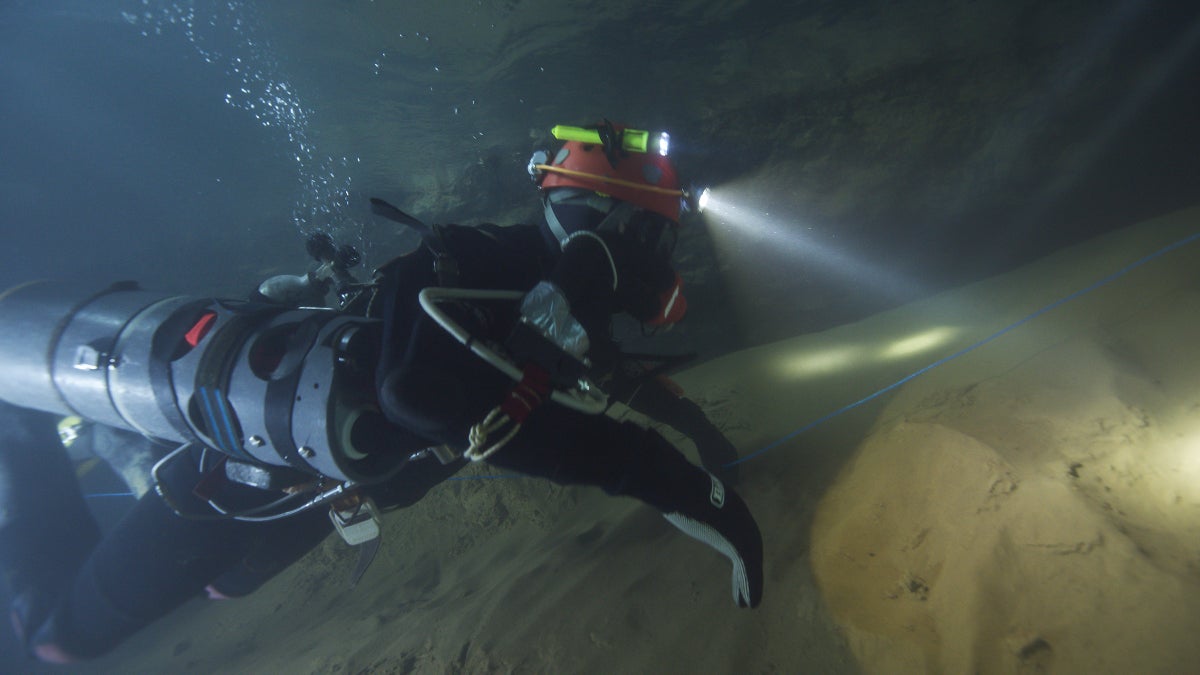No products in the cart.
Outdoor Adventure
A New Documentary Shows How Divers Pulled Off the Thai Cave Rescue
A pivotal moment in Elizabeth Chai Vasarhelyi and Jimmy Chin’s documentary The Rescue is a shot you may have seen before. A small beam of light travels over 13 boys who are huddled together on a ledge in the Tham Luang Nang Non cave in Thailand. A soccer team and their coach have just been discovered in a chamber more than two miles from the cave entrance. The rescuers ask the group how many boys are present, and the boys ask what day it is. Behind the camera is cave diver John Volanthan, who keeps repeating the word “believe” over and over. He explains in the documentary that he was actually saying the word for his own sake, so incredible did it seem that the entire team had survived the sudden flooding that trapped them in the cave—not to mention almost two weeks in a cold enclosure with limited oxygen and no food or potable water. He had to remind himself that they actually had found the team, and every single member was still alive.
It was a euphoric moment to watch on the news in real time, and it’s just as affecting on the big screen. But it was only the beginning of a nerve-racking rescue. With more than 10,000 people on the scene, no one could imagine how they would safely extract everyone and deliver them through cramped, submerged tunnels amid continued flooding.
Filmmakers Vasarhelyi and Chin have directed two enormously successful climbing documentaries together, Meru and Free Solo, and won an Oscar for the latter. In The Rescue, they take on a new challenge: bringing viewers into a complicated, high-stakes rescue effort in a film that draws from interviews with many key members of the operation, recreated scenes, and 87 hours of newly found footage from the Royal Thai Navy. They manage to fully convey just how astounding the success of that massive effort was (all 13 people made it out of the cave alive, in case you somehow haven’t read the news in the last several years). But they also draw out some emotional individual stories behind the rescue that didn’t originally get much airtime.
“They have to make impossible decisions in this impossible situation, and they have everything to lose. They thought if they got one person out, it would be a success.”
At the center of the story is a ragtag group of cave divers from Europe and Australia, considered the A-team of their oddly specific hobby—though all of them still have day jobs like anesthesiologist and IT consultant. They’re called in when organizers realize that there is essentially no one else with the skills and equipment to find the boys, let alone get them out of the cave alive. “I think the idea that they’re volunteers was always something completely stunning,” Vasarhelyi says in an interview. “I mean, these guys are weekend warriors. They’re the only people in the world who could actually affect the rescue, like all the most elite special forces could not do it.” Once the divers discover the team, of course, they’re in much more unfamiliar territory. The rescuers must navigate dark, muddy water in a complex system of tunnels for hours to reach the chamber, with each one carrying sufficient oxygen for themself and one boy per trip. They also discover early on that they’ll probably have to sedate the boys in order to keep them calm enough to evacuate them. “They have to make impossible decisions in this impossible situation, and they have everything to lose,” Chin says. “They thought if they got one person out, it would be a success.”
The Chiang Rai Province and the locals involved in the effort might have faded into the background with all of these cave diving details, but Chin and Vasarhelyi don’t let viewers forget about the massive number of rescue volunteers who made the operation possible. “One of the reasons why we wanted to make the film was that we are Asian filmmakers and there are very few positive nonfiction depictions of Asians,” Vasarhelyi says. “And we are in a unique position to listen.” They include animations explaining the mythology of the cave, the name of which invokes a myth about a princess from an ancient kingdom, and news footage of a visit from the Buddhist monk Kruba Boonchum, who accurately predicts that the team will be found alive within two days. There are also the impressive contributions of the Royal Thai Navy, members of which attempted to help with the cave diving operations even though they did not have the proper equipment or specialized training. The documentary follows the story of retired Thai Navy SEAL Saman Gunan, an experienced diver who died on a mission to deliver oxygen tanks.
The Rescue is in obvious ways the polar opposite of Free Solo: instead of a professional athlete ascending to unthinkable heights for the sake of his own ambitions, we follow weekend warriors deep into the earth for a mission that they feel is their only option in a dire situation. But as in Free Solo, Vasarhelyi is just as interested in exploring athletes’ interior lives as she is in documenting exceptional physical feats. The cave divers all seem to fit a certain type: a history of being bullied, not involved in a lot of long-term relationships, not big team players. One quips, “The last one picked on the cricket team, the first one called to help with the rescue.” In exploring the psychological underpinnings of a niche sport, The Rescue attempts to answer the biggest question raised by the story: “How did these people come to be, who are able to make such a stunning, absolutely moral decision?” Vasarhelyi says. “When the time came, they were their best selves.”
The Rescue is now playing in theaters.
Source link

